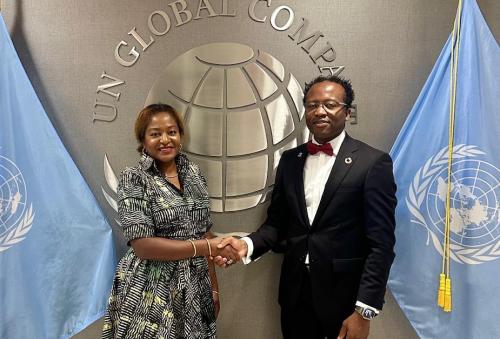The Ukraine crisis is turning into a pivotal moment for the trans-Atlantic alliance—a crucial test of whether the United States and Europe can use political and economic instruments, and sufficiently clear military signals, both to deter a deeper Russian move into Ukraine and to impose genuine costs on Russia for its actions. Even the most hawkish observers acknowledge that it’s not wise to contemplate military force to reverse the Russian move in Crimea. The Administration’s early response was decried by many as far too weak, and US-Europe divides—over kicking Russia out of the G7, over serious sanctions—were in stark evidence. Within days, however, we’ve seen tighter coordination with the European allies; a more serious tone from Berlin and London; and tougher moves from Washington and NATO. We’ll see in the coming days whether it’s been enough.
More broadly, the Ukraine crisis reveals a lot about the contours of the contemporary challenges in American foreign policy, and the (very) tough choices confronting the United States. In the coming period, the options for American leadership are likely to be shaped by distinct by intersecting forces–all on display in Ukraine.
First, the strength and vitality of America’s alliances will amplify or constrict the impact of American power. Take the question of sanctions against Russia. By itself, the United States can do exactly what the President suggested: impose costs. Working together with the UK, where a large majority of Russian dollar deposits are held, the Western allies could do more than just impose costs on Russia: acting collectively they can serously weaken the Russian economy. Whether they should or not, is a critical debate, currently underway in the Administration.
Second, the attributes and attitudes of the rising powers will shape American options. Here, Russia stands apart from the other rising powers. Russia isn’t a rising power; it’s a recovering power, but a troubled one. The end of the Soviet Union caused the collapse of its economy. By 2000, fueled by energy sales, it had begun to rebound, and has now almost caught up to where it was in 1989. But it’s incredibly badly managed—hugely reliant on energy sales, and only solvent when the price of oil is well north of $100/barrel. There’s weakness there, but also a danger: because they’ve less at stake in a healthy global economy, there’s less to lose from crisis. This is the counterpoint to the one made above: even if the West flexed its economic muscles and hobbled the Russian economy, that might not convince Putin to step beak from military adventurism; indeed, it might spur him to greater bouts of spartanism.
The attitude of the other rising powers is more interesting. Critics have pointed out that India has noted that Russia has legitimate interests in Ukraine—but even the United States takes that position. Looking more closely at India and China—both of whom matter vitally to Russia—their stance is essentially a tortured silence: they don’t want to have to criticize Russia, and they’re no stranger to resentment about the West’s mingling in other countries internal affairs (as Russia, and some others, perceive the West’s role in Ukraine). But they have big stakes in a reasonably stable international system, because they’re far more plugged into the global economy, and more reliant on the U.S. for the stable flow of energy.
Most important, what we see in the Ukraine is a kind of crisis that is likely to be a major, and challenging feature of the global landscape, and one that American foreign policy will have no choice to confront. There’s been a lot of ink spilled recently over the question of whether we confront a “new Cold War”—either with China, given their military assertiveness in the East and South China Seas, or now with Russia. There’s a very different way of thinking about this. In both cases, what we’re witnessing is dynamic and risky competition between second tier powers – between China and Japan in Asia, and between the EU and Russia over Ukraine. Historically, when there’s turbulence in the international system, conflicts often arise between the second tier of powers, rather than in the form of confrontation with the top power.
But this form of crisis poses acutely tough choices for the United States. Should we go to war with Russia over the Ukraine, and with China over the Senkaku islands? That’s a horrid option. Should we sit by while the European project loses ground to Russian military assertiveness, and should we abandon a key ally (Japan) in the face of Chinese aggression, should it come to that? That’s a disastrous option too.
Escaping that choice means combining three things. It does mean peace through strength—despite the way that phrase has been distorted politically, there’s no question that the strength and credibility of US response in Europe and Asia is what stands between the current situation and deeper crisis. Second, we should, where we can, actively be building up the case for and tools for restraint. In the case of China, that means working with them, not against them, on their global energy needs—while making abundantly clear that we will push back, hard, against military assertiveness in Asia. Russia may prove to be the tougher case, because it’s dependence on the global market is less. Still, Russia has a strong interest in restoring its standing in top international fora, and in regions like the Middle East, and the United States has ample power—should we choose to use it—to complicate that play. In all of this, it will matter a lot how strong and how broad is the coalition behind us. This means, third, it means returning to an older emphasis on alliances, and broader coalitions. In the Ukraine crisis, it will matter a lot what Europe does—but it will also matter to Russia how India and Turkey and China respond.
In a new book (Still Ours to Lead) I argue that what I call “coalitional power” has to become the leading edge of American foreign policy. What the Ukraine crisis reveals above all is that the United States does not have the option of sitting back. If we step away from leadership of the international system, we’re facing a series of turbulent crises, with high stakes, and huge costs for the U.S. economy and the global system. I originally titled my book ‘Still Ours to Lose’, then rejected that as too defensive. But what the Ukraine crisis highlights above all is, when it comes to a stable international order, we have to lead it, or lose it.
The Brookings Institution is committed to quality, independence, and impact.
We are supported by a diverse array of funders. In line with our values and policies, each Brookings publication represents the sole views of its author(s).



Commentary
Still Ours to Lead: What’s at Stake in Ukraine and Beyond
March 17, 2014